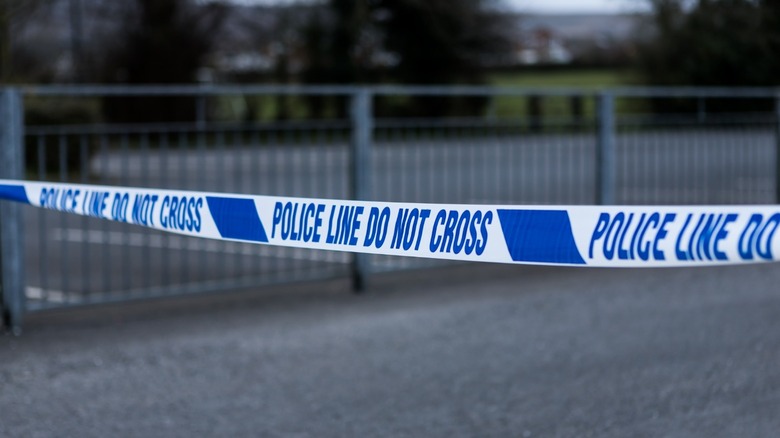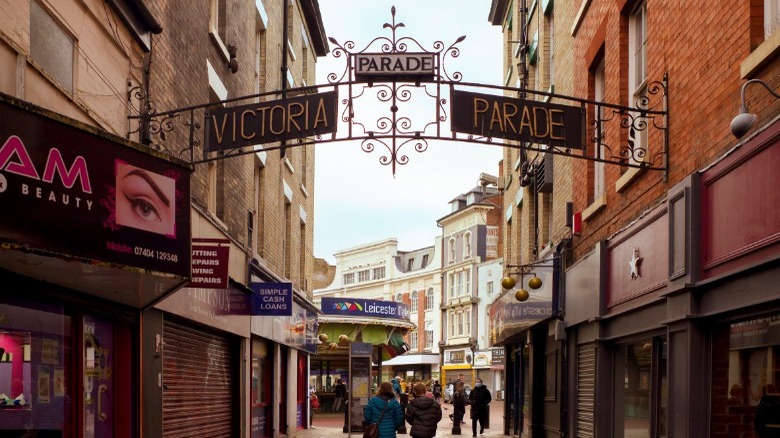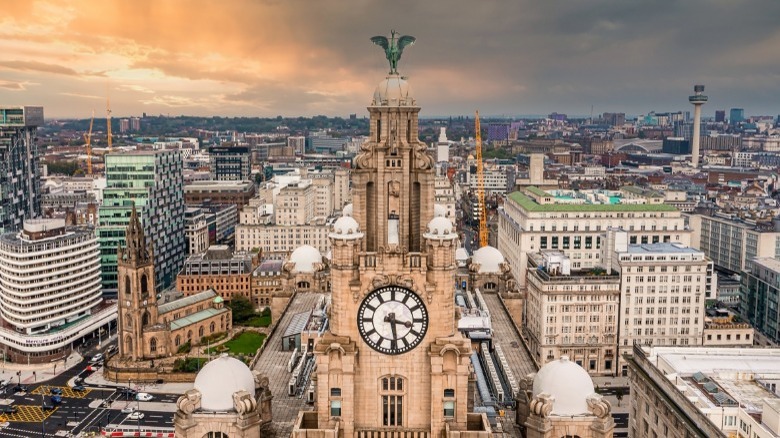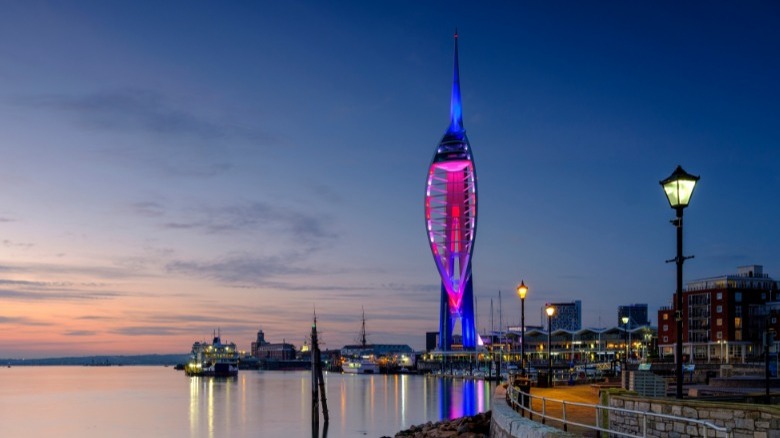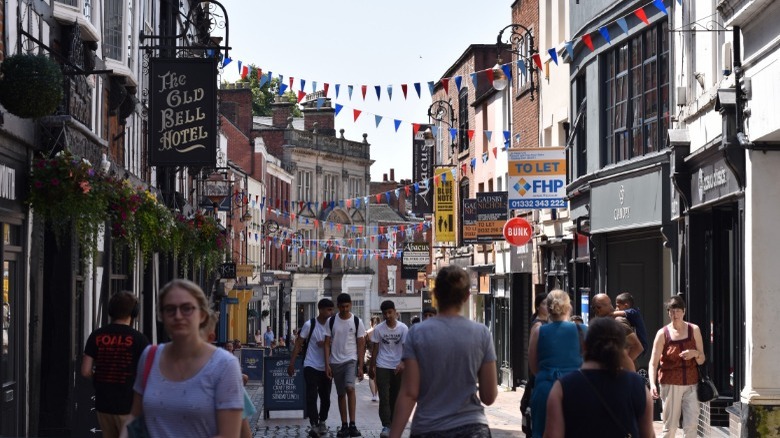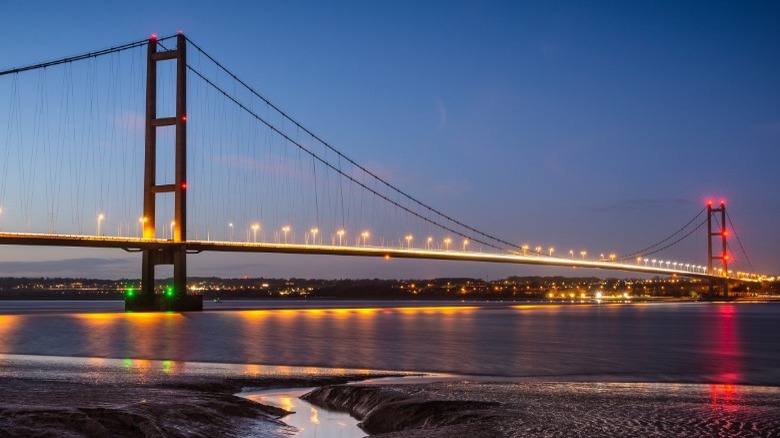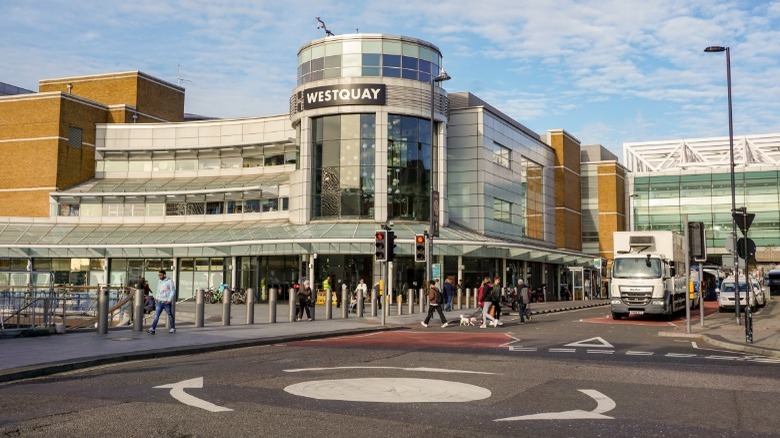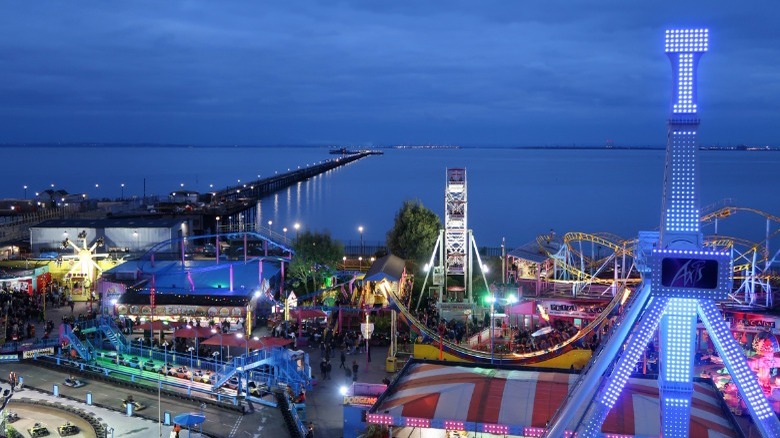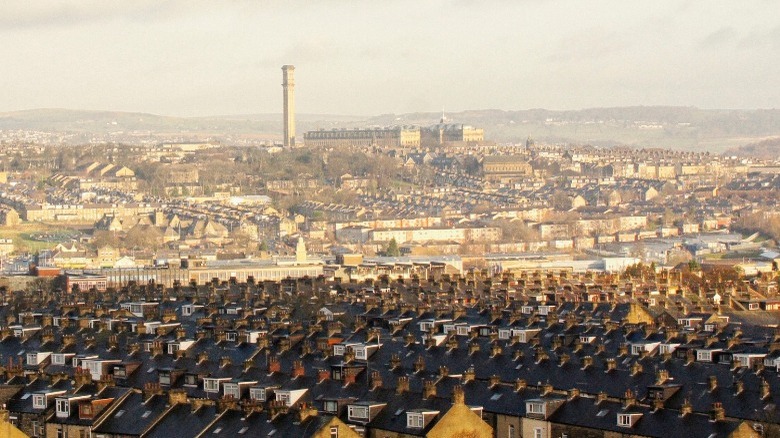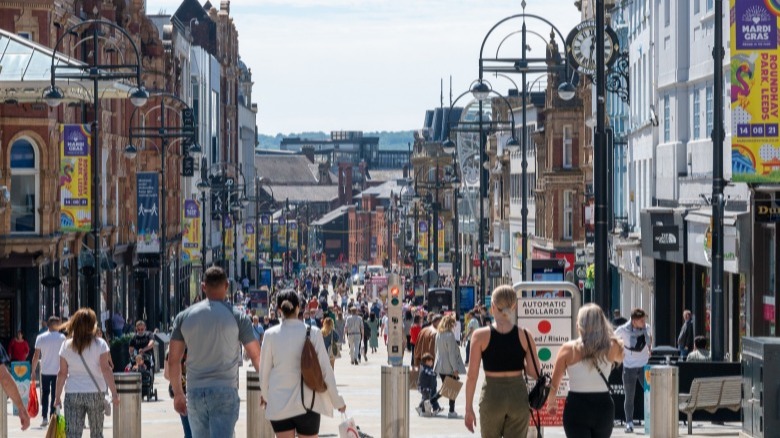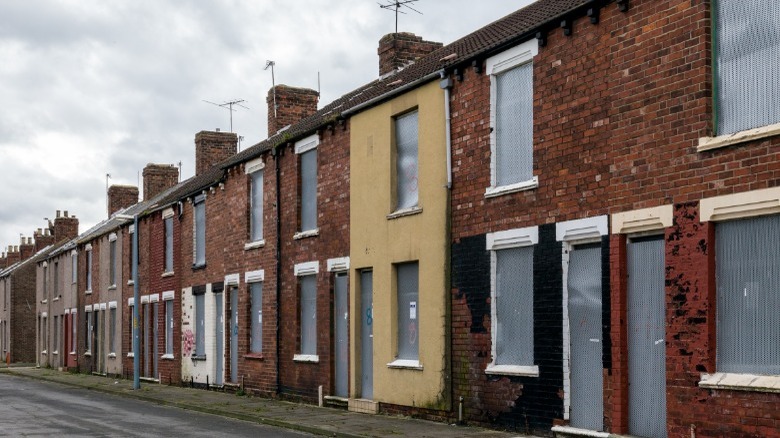The Most Dangerous Cities In The United Kingdom
Crime is on the rise in the United Kingdom. According to the Office for National Statistics, overall crime had risen by 14% during the year ending September 2021. To determine what are currently the most dangerous cities in the United Kingdom, Crime Rate's statistics are here to help, charting the rates of violence and sexual offences across the nation.
Crime Rate is a data analysis and geographic information system that collates police force data, freedom of information requests, and other information to quantify and categorize crime across the United Kingdom. Crime Rate statistics show that the rate of violence and sexual offences in the U.K. is increasing almost year on year. In 2021, the rate was 32.46 per 1,000 residents, which was an increase of 2.32 on the 30.14 figure seen in 2020.
London has the highest number of violence and sexual offences, with 244,975 reported incidents. However, as these incidents occurred in a population of some 9 million people, the 2021 rate is just 27.36 per 1,000 residents, which is below the national average of 32.46 (via Greater London Authority). For context, the cities in this article start with a rate of 49.11 and only get worse. So, in descending order, here are the 10 most dangerous cities in the United Kingdom.
Leicester – 49.11
With a history dating back to the Roman era, Leicester is among the oldest cities in the United Kingdom (via Britannica). The city was a center of industry during the 19th and early-to-mid 20th centuries, specializing in textiles; Leicester's garment factories were so successful that in 1936, the city was ranked as the second richest in Europe (via Story of Leicester).
However, in the 21st century, Leicester has ranked among the lowest paid cities in the country (via BBC). British think tank Civitas argues that there is a positive correlation between poverty and crime, adding that those on incomes below £10,000 are "Considerably more likely to be attacked by someone they know and far more likely to be attacked by a stranger."
In 2021, Leicester recorded 20,408 incidents of violence and sexual offences, which was 13% higher than 2020's figure of 17,702. With a crime rate of 49.11, it was Britain's 10th most dangerous city in 2021. According to the Leicester Mercury, knife crime has been a driving force of the city's violence, causing Leicester City Council to launch a £450,000 campaign to tackle knife culture. Councillor Kirk Master said, "Knife crime affects our communities and families, devastating lives and leaving a lasting impact ... more needs to be done to address not only the root causes of knife crime and serious violence, but also to ensure that those who do use knives to commit crime are supported away from this behaviour."
Liverpool – 51.21
Known for The Beatles and a winning football team, Liverpool was the ninth most dangerous city in the United Kingdom during 2021, recording 30,053 incidences of violence and sexual offences.
The city has a long history of gangs, from 19th-century crews such as the "Cornermen" and the "High Rip", to contemporary groups including the "Croxteth Crew," "Nogga Dogs," and the "Moss Edz" (via The Conversation). These hierarchical drug gangs have engaged in territorial violence involving both knives and firearms. According to CrimeStoppers, another trend among street gangs is the "county lines" phenomenon, which involves the manipulation of the young and vulnerable to carry drugs across county lines. Victims are often bribed with expensive sportswear and other designer goods, luring them into a murky, dangerous underworld. "County line" criminals also stake out houses of vulnerable people, often drug addicts, to use as regional headquarters for their out-of-town dealings. This is called as "cuckooing," which is a reference to the cuckoo's practice of stealing other birds' nests to rear their young.
Liverpool gang violence made headlines in 2007 when 11-year-old Rhys Jones was shot dead by an alleged member of the Croxteth Crew. Tragically, Jones was caught in the crossfire of a gang shootout (via The Guardian). According to the Liverpool Echo, 43 shootings were recorded across the area in 2021, causing numerous deaths. However, while gun violence is clearly an issue in the city, those latest figures are the lowest in this century so far. For example, over 80 shootings were reported in 2019.
Portsmouth – 51.74
A naval city situated on the south central coast, Portsmouth was Britain's eighth most dangerous city in 2021, reporting 11,892 offences in a population of approximately 250,000 (via World Population Review). Like many other British cities, Portsmouth has a network of drug gangs, namely the so-called "TJ" network, according to The News. Portsmouth police officer Mark Brockman pointed to the correlation between drugs and violance, saying, "we are committed and doing everything we can to tackle drugs and associated crime in our city and keep our communities safe."
However, despite officers' best efforts, group violence persists in the city. In December 2021, The News reported of a "bloody brawl" in the Paulsgrove neighborhood that left two teenagers with stab wounds. Shortly before local schoolchildren were due to walk home, four youths were seen ambushing a lone male. An unnamed witness said, "It was horrendous. I saw four lads attacking this one lad. I was going to go out and break up the fight but then I saw the knives and I just closed the door and called the police."
Family of another witness said, "All hell was let loose. There were bodies flying here, there and everywhere. Police said this was a targeted attack and not something that was random. But it's more worrying that kids are going around with knives. How many people go round tooled up? It's dangerous."
Derby – 53.31
This midlands city ranked as the seventh most dangerous city in 2021, producing a crime rate of 53.31 from 14,109 incidents of violence and sexual offences. Again, the trade of illegal drugs fuels violence and murder in the city. In March 2022, a cannabis gardener was shot in the leg and beaten by a rival gang attempting to muscle in on the operation, which consisted of 340 plants estimated to be worth £250,000 (via Derby Telegraph).
Drugs and weapons have found their way into education, too. During bag searches at a city high school, staff confiscated "a sharp pair of scissors, a ruler carved to a point, a razor blade, and a pen knife." A spokesperson said, "It does not need to simply be a knife or blade to be deemed as an offensive weapon as these have been fashioned and are intended to use as an offensive weapon and would be dealt with in the same way as possession of a knife" (via Derby Telegraph).
One of Derby's most notorious crimes occurred on May 11, 2012. According to the BBC, police were called to a house fire in a residential neighbourhood. The six children in the house, aged from 5 to 13, all died from smoke inhalation. Treating the fire as suspicious, Derby police launched an investigation into the cause of the fire. After a tearful press conference hosted by Mick Philpott, the children's father, it transpired that Philpott, who had gained some notoriety for his manipulation of women and gleeful use of state benefits, had deliberately set the fire in an attempt to frame his estranged wife, who had recently left him (via The Guardian).
Kingston upon Hull – 54.66
In 2021, Hull was Britain's sixth most dangerous city owing to some 15,743 incidents of violence and sexual offences, producing a crime rate of 54.66. According to the Hull Daily Mail, the city's high rate of violence caused the United Kingdom Home Office to allocate extra funding and evaluation for its own Violence Reduction Unit. As with other parts of the United Kingdom, Hull is experiencing dangerous levels of knife crime. Home Office data found that 721 incidents of knife crime occurred in the Humberside area between October 2020 and September 2021.
This spate of violence reinforces the national perception of Hull as one of the worst cities in the United Kingdom. The city has been given a very hard time by "Crap Towns," a series of books by Sam Jordison and Dan Kieran (via I News). The first installment named Hull as the very worst city in the nation, but the book wasn't intended as an insult. Jordison said, "Back then, it was seen as fun ... One of the reasons the book worked was because of a Bruce Springsteen feeling: you've got to bust out, but you criticise your home town because you secretly love it."
Happily, despite Hull's issues with crime and deprivation, the city was named a U.K. City of Culture in 2017. According to Professor Franco Bianchini, "There is no doubt that since Hull 2017, the city's image has changed for the better both within Hull and externally."
Southampton – 54.84
Like nearby city Portsmouth, this southern port city has struggled with crime. The fifth most dangerous city in Britain for 2021, Southampton reported 14,792 offences, producing a crime rate of 54.84. According to the Hampshire Constabulary, crime has increased in almost every area of the city, with knife crime again being a scourge of the area. March 2022 alone saw two knife attacks involving teenagers. The Daily Echo reported a group knife attack on a 15-year-old boy that left the youth with puncture wounds to his arm and abdomen. Fortunately, the injuries were not considered to be life-threatening.
Earlier in the month, however, another teenager was stabbed on a Southmapton housing estate, inflicting life threatening injuries (via The Daily Echo). This attack came just six months after another stabbing on the estate, leaving a man in his 40s with stab wounds to his abdomen.
The grim reality of violent crime has earned Southampton unwanted negative attention, including from the wry authors of the "Crap Towns" series. According to the Southampton Tab, the city's "grey, dull, left-behind outlook" contributes to its "crap" status, with areas such as Millbrook, Eastleigh, and Shirley being some of the "scariest places to venture to."
Southend-on-Sea – 55.62
The Visit Southend travel board describes their town in glowing terms, highlighting parks and gardens where residents and visitors can enjoy sports, nature, and entertainment. That may well be true, but it is also true that Southend-on-Sea, according to Crime Wave, was the fourth most dangerous city in Britain during 2021, recording 10,296 offences and a rate of 55.62.
Heart described Southend as a "crime hot spot," adding that more crimes were reported in Southend than in any other part of Essex. Chief inspector David Colwell said, "Police in Southend routinely patrol the town centre, and deal with any crime that happens ... officers are also working on successful initiatives and operations which tackle anti-social behaviour, drugs and prostitution.”
Drug crime is nothing new to Southend and the wider Essex area. During the ecstasy craze of the 1990s, crime gangs in Essex became notorious for their grip on the drug trade (via The Guardian). Among the best known figures from this era were Patrick Tate, Tony Tucker, and Craig Rolfe. According to The Independent, police detectives believed that the three men were associated with the drug dealing ring that caused the death of Leah Betts, an Essex teenager who died after taking an ectasy tablet during her 18th birthday party. A month later, the three men were found dead in a Range Rover in a remote country lane, which the press described as a "gangland execution." The killings became the subject of a interminable series of British gangster films, namely the "Rise of the Footsoldier" series (via Vice).
Bradford – 64.20
Famous for its industrial heritage and curry scene, Bradford struggles with crime and poverty (via BBC). In 2021, it was Britain's third most dangerous city, suffering some of the worst crime rates in the county of West Yorkshire, which is the most dangerous county in England, Wales, and Northern Ireland, according to Crime Rate.
In addition to poverty, Bradford has also struggled with ethnic tension. In July 2001, the city was wracked by riots throughout the city, causing damage worth an estimated £27 million (via BBC). Clashes occurred between the Asian population and far-right extremists associated with the National Front, a political party described by Warwick University as a, "populist and explicitly racist anti-immigration group." Police constable Brian Booth had been on the job just one month when he was confronted by the riots: "We had bricks, sticks, fireworks [and] petrol bombs thrown at us."
Bradford has also been home to several notorious killers, namely Peter Sutcliffe, the so-called Yorkshire Ripper. Sutcliffe terrorized Bradford and the wider Yorkshire area for some five years before he was caught by chance in Sheffield with a prospective victim on January 2, 1981 (via BBC and I News). Later that year, the former lorry driver was found guilty of murdering 13 women. Reporter Joan Smith said, "I don't think any woman who was around in the north of England at that time will ever be able to hear his name without some kind of shudder."
Leeds – 65.45
Located just to the east of Bradford, Leeds was the second most dangerous city in Britain during 2021, suffering 33,457 incidents of violence and sexual offences. Unlike other notably dangerous cities, however, Leeds enjoys relatively high levels of wealth. In fact, in 2015, the city was named the wealthiest city in the north of England, according to the Yorkshire Post. However, some neighborhoods in Leeds remain troubled, with Armley, Burmantofts and Richmond, and Killingbeck and Seacroft among the most deprived, Leeds Live reports.
Some of the most shocking violence in Leeds is caused by the city's underworld. In August 2018, 24-year-old Christopher Lewis was shot dead on his mother's doorstep in what Leeds Live reported as a gangland execution. 15 months prior, in January 2017, 19-year-old Raheem Wilks was shot dead outside of a barber shop in the Harehills neighborhood. The gunman fired several times, striking a bystander's car and almost hitting an 8-year-old girl.
These killings continued a trend of violent and sometimes mysterious crimes in the northern city. For example, in June 2008, 20-year-old Adam Chadwick answered a knock at the door and was met by a woman asking for "Michelle." Chadwick told the woman that she had the wrong house and closed the door. Minutes later, the woman returned with three masked men who barged into Chadwick's property and shot him at point blank range, inflicting a fatal head injury from which he died two days later. The inexplicable crime remains unsolved.
Middlesbrough – 66.15
The most dangerous city in Britain during 2021 was Middlesbrough, which recorded 11,732 offences in a population of 138,400, producing a crime rate of 66.15 (via World Population Review). Like the city of Hull (via I News), Middlesbrough is thought of as one of the worst places to live in the United Kingdom, according to the BBC. Many of the town's statistics make for sobering reading. For example, over 40% of private rented housing is classed as "low quality," and more than two-thirds of council wards are considered deprived.
Worse still is the city's criminal activity. Speaking to The Mirror, former Middlesbrough resident Megan Tunstall said, "I was getting my doors kicked in when I was living here ... You don't see any people patrolling or security or anything." In response to distressing anecdotes, Middlesbrough mayor Andy Preston accused local politicians of failing to address the "big groups of men who hang around street corners day and night," as well as the, "horrific gang violence and intimidation of residents and workers."
This perceived neglect may change thanks a recent £3.5 million investment in a new crime unit, which is aimed to empower Cleveland Police to tackle violent crime across the Middlesbrough area (via The Northern Echo).
